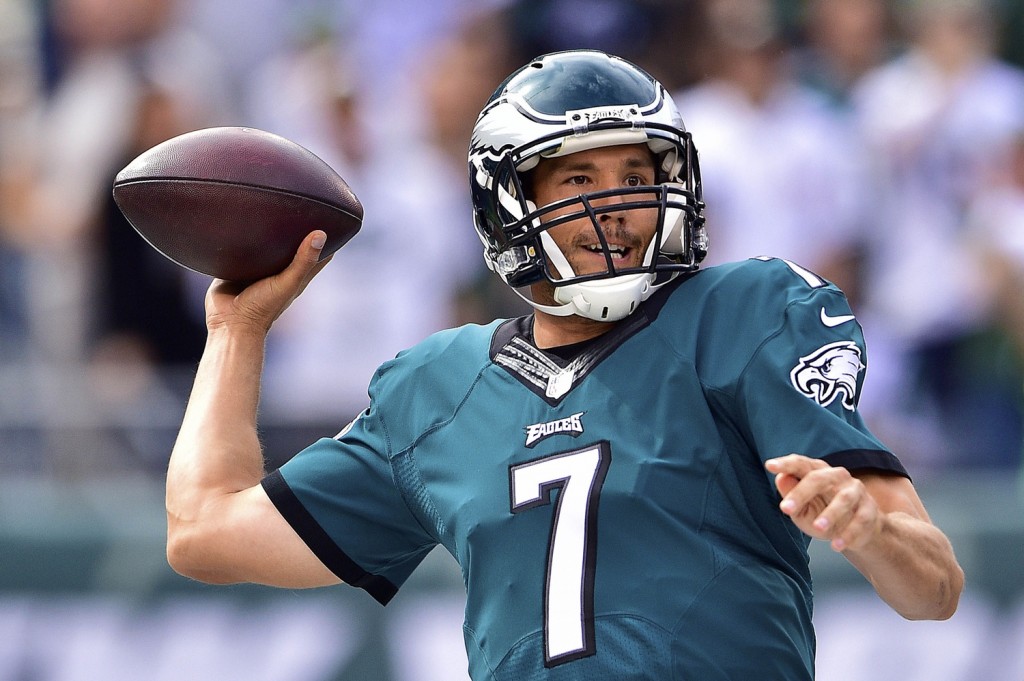Four Downs: Sam Bradford’s Big-Play Balls

Photo courtesy of USA Today Sports.
LANDOVER, MD — The Eagles fell to the Redskins, 23-20, for their second NFC East loss of the season. Here’s what we saw.
MOST TELLING STAT: 14
The Eagles moved the ball in spurts, not on a consistent basis, which limited the number of points they were able to score. They managed just 14 first downs and relied on big throws from Sam Bradford (more on that below) instead of stringing several first downs in a row.
On the other hand, the Redskins recorded 25 first downs and even though they only reached the end zone twice, Washington made three field goals because they consistently moved the ball. The Eagles averaged 4.6 yards per rush, but only carried the ball 18 times.
Because Philadelphia couldn’t rely on the run, they faced third-and-long much more than they would’ve liked and only converted 33 percent of their third down attempts. Although Bradford’s deep passes are a positive sign, the Eagles can’t rely on those as their only method of scoring points.
DID YOU NOTICE?
The big matchup coming into the game was Washington’s top-five rushing attack versus Philadelphia’s league-leading run defense. Although the Redskins broke a few good runs, the Eagles held them in check, which Bennie Logan should get a lot of credit for.
The nose tackle made it very difficult for Washington to run up the middle, and Philadelphia only gave up a rushing touchdown after Kirk Cousins recovered his own fumble on the goal line and ran one yard. The Eagles held the Redskins to less than four yards per carry, which made it difficult for Washington to finish off drives.
Instead of scoring touchdowns, the Redskins had to settle for three field goals. Although they lost the game, Philadelphia’s defense once again played well enough for them to win.
QB TRACKER
In the first quarter, Bradford looked like the quarterback we saw in the first three games of the season. He under-threw passes and didn’t take shots down the field, but his offensive line gave him little time and allowed three sacks. After Jason Peters exited the game and Matt Tobin shifted to left tackle while Dennis Kelly played right guard, Bradford could rarely step up into a pocket.
In the second quarter, Bradford completed his first pass of the season that traveled more than 20 yards, connecting with Nelson Agholor for a 45-yard play gain. The receiver did a good job of creating separation and getting over the top, which may have encouraged Bradford to attack vertically more in the second half.
In the final two quarters, Bradford attacked down field much more than he did in the first three games. Although he sometimes missed deep receivers or didn’t hit them in stride, he also made several great throws. Bradford completed a 62-yard touchdown pass to Riley Cooper and a 39-yard touchdown pass to Miles Austin, and finally showed that big arm that helped make him the No. 1 overall pick in the 2010 draft.
FINAL THOUGHT
This may sound strange, but Caleb Sturgis likely saved his job by making two extra points. After missing a 33-yard field goal and an extra point, the kicker was likely in danger of getting cut if he missed another short kick. However, he converted both times after the Eagles’ final two touchdowns.
Going forward, he’s certainly a player to keep an eye on. He ranked fourth-to-last in the NFL in field goal percentage in his only two seasons, and will probably have a short leash. One advantage he does bring to the table, however, is his strong leg and ability to limit kickoff returns with touchbacks.